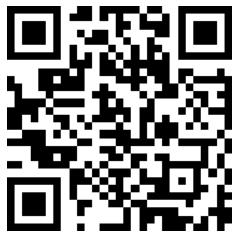Q1. 工作年限(单选题)
Q2. 您的婚姻状况(单选题)
Q3. 您的年龄阶段是?(单选题)
Q4. 您的姓名:(填空题)
Q5. 听力2・ When will the speakers leave for the airport?(单选题)
A. At 2:00 pm.
B. At 3:00 pm.
C. At 5:00 pm.
Q6. Where are the speakers?(单选题)
A. In the classroom.
B. In the lecture hall.
C. In the library.
Q7. How much did the woman pay for what she bought?(单选题)
A. $ 0. 99
B. $1.9
C. $ 2. 97
Q8. How does the woman feel at the end of the conversation?(单选题)
A. Anxious.
B. Relieved.
C. Confident.
Q9. What do we know about the man?(单选题)
A. He doesn't want to help the woman.
B. He knows little about cultural customs.
C. He is good at gathering information online.
Q10. 听力10. What was the woman's life like in high school?(单选题)
A. Stressful.
B. Meaningful.
C. Boring.
Q11. 听力11. Which sport did the woman like most?(单选题)
A. Playing basketball.
B. Swimming.
C. Skiing.
Q12. 听力12. What are the speakers mainly talking about?(单选题)
A. High school life.
B. Plan for the future.
C. Hobbies.
Q13. 听力13. Who is Mathew?(单选题)
A. Jenny's colleague.
B. Jenny's schoolmate.
C. Jenny's boss.
Q14. 听力14. Where was the man born?(单选题)
A. In London.
B. In Manchester.
C. In Bangkok.
Q15. 听力16. What does the man think of Manchester?(单选题)
A. Wonderful.
B. Old-fashioned.
C. Industrial.
Q16. 听力17. What is James doing?(单选题)
A. Making a video.
B. Having a small talk.
C. Giving a lecture.
Q17. 听力18. Where is the clock tower?(单选题)
A. In front of James.
B. On James' left side.
C. On James’ right side.
Q18. 听力19. What is the second suggestion James gives?(单选题)
A. Taking a rope.
B. Removing animal waste.
C. Knowing the pet's habit
Q19. 听力20. What's the man's purpose?(单选题)
A. To express his happiness.
B. To tell us how to raise animals.
C. To give tips on walking animals.
Q20. 阅读理解21. If you are taking a baby, which one may suit you best?(单选题)
A. Manhausen.
B. Cedar Lakes Estate.
C. Soho Farmhouse.
D. Salt House Inn.
Q21. 阅读理解22. What is special about Soho Farmhouse?(单选题)
A. Water scenery.
B. Limited access.
C. Outdoor activities.
D. Family-style meals.
Q22. 阅读理解23. Where is this text most probably taken from?(单选题)
A. A magazine.
B. A brochure.
C. A textbook.
D. A website.
Q23. 完型填空54.(单选题)
A. unimportant
B. improper
C. unfair
D. impolite
Q24. 阅读理解25. Which word can best describe Hannah's mother?(单选题)
A. Supportive.
B Generous.
C. Optimistic.
D. Helpful.
Q25. 阅读理解26. What result did the accident cause to Hannah and the author?(单选题)
A. It worsened their friendship.
B. It made both of the two disabled.
C. It changed Hannah's working career.
D. It ruined the author's confidence in driving.
Q26. 阅读理解27. Which is the best title for the text?(单选题)
A. Lucky Survival
B. Lifelong Friendship
C. My Best Friend Hannah
D. Learning to Forgive
Q27. 阅读理解28. What do the words "social reality" in Paragraph 2 mean?(单选题)
A. Completion of the goal.
B. Necessary hard work.
C. People's acknowledgement.
D. A sense of satisfaction.
Q28. 阅读理解29. What does Peter Gollwitzer try to tell us?(单选题)
A. Writing down the goal is very helpful.
B. Achieving personal goal needs more time.
C. Keeping the goal secret makes people work harder.
D. Making the goal public makes people less satisfied.
Q29. 阅读理解30. How did Peter Gollwitzer prove his idea about people's goal?(单选题)
A. By giving figures.
B. By giving examples.
C. By making a survey.
D. By making comparison tests.
Q30. 阅读理解31. What will probably happen if you tell your friends your goal?(单选题)
A. You will be more confident
B. You will not gain satisfaction.
C. You are less likely to realize it.
D. You'll be much more motivated.
Q31. 阅读理解32. What makes the comparison between self-driving cars and human-driven cars unfair?(单选题)
A. Self-driving cars never get tired.
B. Statistics are collected differently.
C. Machines can make decisions faster.
D. Self-driving cars know the world better.
Q32. 阅读理解33. What does the underlined word “perils" in Paragraph 3 most probably mean?(单选题)
A. Dangers.
B. Self-driving cars.
C. Pedestrians.
D. Human-driven cars.
Q33. 阅读理解34. In which aspect can self-driving cars beat human-driven cars?(单选题)
A. Driving steadily.
B. Climbing steep slopes.
C. Evaluating the cost of loss.
D. Making complex decisions.
Q34. 阅读理解24. What caused the car accident?(单选题)
A. Poor visibility.
B. Driving too fast.
C. Hitting a patch of dirt.
D. Not staying focused,
Q35. 阅读七选五36题(填空题)
Q36. 阅读七选五37题(填空题)
Q37. 阅读七选五38题(填空题)
Q38. 阅读七选五39题(填空题)
Q39. 阅读七选五40题(填空题)
Q40. 完型填空41.(单选题)
A. seen
B. had
C. done
D. thought
Q41. 完型填空42.(单选题)
A. argue
B. move
C. talk
D. leave
Q42. 完型填空43.(单选题)
A. necessities
B. facilities
C. valuables
D. tools
Q43. 完型填空44.(单选题)
A. monitors
B. enjoys
C. ignores
D. notices
Q44. 完型填空45.(单选题)
A. could
B. must
C. should
D. would
Q45. 完型填空46.(单选题)
A. put
B. take
C. bring
D. figure
Q46. 完型填空47.(单选题)
A. forgive
B. answer
C. watch
D. accept
Q47. 完型填空48.(单选题)
A. keen
B. dependent
C. focused
D. impressed
Q48. 完型填空50.(单选题)
A. Before
B. When
C. Until
D. After
Q49. 完型填空51.(单选题)
A. called
B. arrived
C. known
D. asked
Q50. 完型填空52.(单选题)
A. push away
B. fall off
C. get on
D. hold onto
Q51. 完型填空53.(单选题)
A. quickly
B. impatiently
C. unhappily
D. gently
Q52. 阅读理解35. Why does the author write this text?(单选题)
A. To support human-driven cars.
B. To show his doubt about self-driving cars.
C. To call for exact evaluation of self-driving cars.
D. To stress the importance of reducing car accidents.
Q53. 完型填空55.(单选题)
A. ridiculous
B. sad
C. unconfident
D. nervous
Q54. 完型填空56.(单选题)
A. cry
B. laugh
C. nod
D. jump
Q55. 完型填空57.(单选题)
A. puzzled
B. unsatisfied
C. exhausted
D. unwilling
Q56. 语法填空69(填空题)
Q57. 完型填空59.(单选题)
A. discussion
B. plan
C. quarrel
D. choice
Q58. 完型填空60.(单选题)
A. life
B. chance
C. experience
D. fortune
Q59. 语法填空61(填空题)
Q60. 语法填空62(填空题)
Q61. 语法填空63(填空题)
Q62. 语法填空64(填空题)
Q63. 语法填空65(填空题)
Q64. 语法填空66(填空题)
Q65. 语法填空67(填空题)
Q66. 语法填空68(填空题)
Q67. 完型填空58(单选题)
A. Afterwards
B. Instead
C. Frankly
D. Generally
Q68. 语法填空70(填空题)
Q69. 短文改错(请上传试题照片,大小不超过5M)(填空题)
Q70. 书面表达(请上传作文照片,不超过5M)(填空题)


